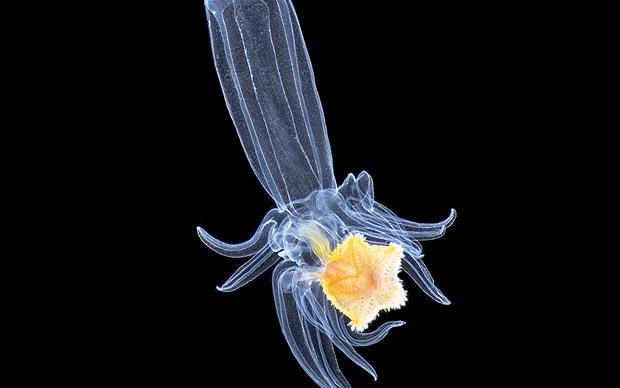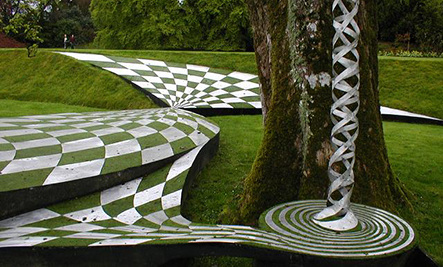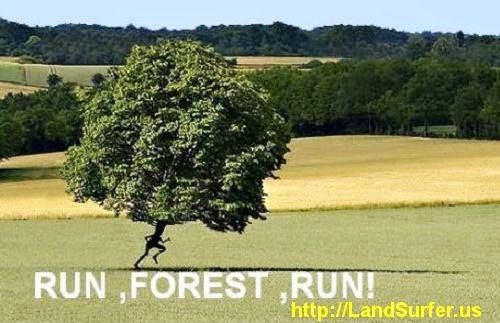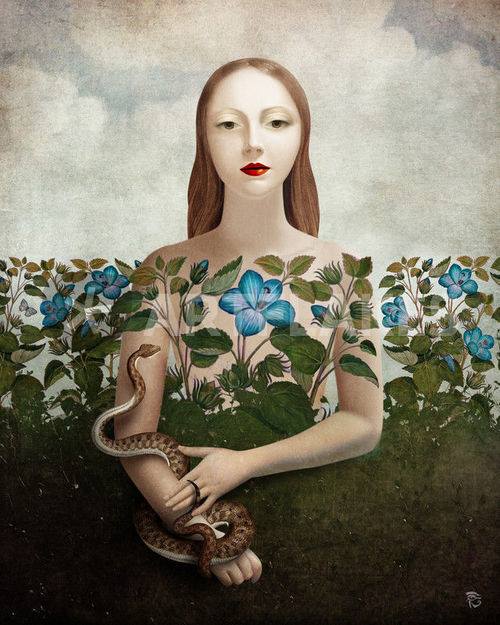

| Visitors Now: | |
| Total Visits: | |
| Total Stories: |

| Story Views | |
| Now: | |
| Last Hour: | |
| Last 24 Hours: | |
| Total: | |
Climate Change or PERMACULTURE – The New Year Revolution?
Wednesday, December 25, 2013 1:10
% of readers think this story is Fact. Add your two cents.
Is “PERMACULTURE” This Year’s New Beginning or are we all going to hide behind the fear mongers and eat junk food forever?
Tom Dennen, ‘the Agriculural Philosopher’ presents ‘Fifth Element” on DeenTV, South Africa starting Feb 2014)
Permaculture is a relatively “new” concept in modern man’s understanding of his relationship with the earth as an ecosystem, particularly the Plant Kingdom, which has evolved along with us over the last 50 million years Four-domesticated-plants-that-rule-our-lives-tulips-beauty-potatoes-staple-nutrient-apples-sweetness-and-marijuana-insight
.jpg) It is common knowledge in the ‘Third World’ that food is medicine, something the ’First World’ is only recently coming to understand.
It is common knowledge in the ‘Third World’ that food is medicine, something the ’First World’ is only recently coming to understand.
One out of every seven ‘First World’ Women will be diagnosed with breast cancer at sometime during her life. In china one in five thousand
Diet is the common denominator.
The first step toward an understanding the earth’s closed ecosystem is the rethinking the concept of ‘waste’.
In a closed ecosystem, there is no such thing, only recycling.
All life on Earth is carbon-based.
The Animal Kingdom breathes out carbon dioxide, which the Plant Kingdom needs to live. Plants take in this carbon dioxide, keep the carbon and release the oxygen back into the atmosphere, from which the Animal Kingdom takes it.
The atmosphere is 90% nitrogen, which animals need, but cannot extract.
Nitrogen is ‘fixed’ by various bacteria and taken into plants as a nutrient and from plants into herbivores.
 The largest source of oxygen from plants is ocean plankton. While the great ‘lungs’ of the planet like the Amazon River Basin are part of the great plant – animal ‘nutrient-swapping’ cycle, plankton is our biggest source of oxygen.
The largest source of oxygen from plants is ocean plankton. While the great ‘lungs’ of the planet like the Amazon River Basin are part of the great plant – animal ‘nutrient-swapping’ cycle, plankton is our biggest source of oxygen.
All carbon-based life depends on the trading or re-cycling of fourteen basic nutrients between the plant and animal kingdoms:
Six macronutrients: nitrogen (N), phosphorus (P), potassium (K), calcium (Ca), magnesium (Mg), and sulfur (S);
And eight micronutrients: boron (B), chlorine (Cl), copper (Cu), iron (Fe), manganese (Mn), molybdenum (Mo), zinc (Zn) and nickel (Ni)
The most critical (and “limited”) resource is phosphorus.
Phosphorus has been mined from phosphate rock that could ‘peak’ as soon as 2032, which leaves us with human waste-water reclamation – humans excrete about 30 liters of phosphates a year in urine or about 7ml a day. (Animals use phosphorus to build and repair bones and teeth and is a critical part of industrial fertilizers.)
So much so that there are those who consider ‘peak’ phosphorus a worse scenario than peak oil. Some believe that Global phosphorus production most likely peaked in 1989, but If global phosphorus production has not yet peaked, it will likely do so by 2033.
Some corporations are already in the market for recovered phophates, buying it from municipalities. Today’s price, $165 / ton has been fairly constant for twenty years athough there was a peak between 2007 and 2008 when when the idea of ‘peak’ phosphorus hit the market, but it recovered and has remained fairly constant up until now.
In 2007–2008, the price increase of phosphate fertilizer was due in part to the increasing popularity of meat- and dairy-based diets, especially in growing economies like China and India, and to the expansion of the biofuel industry (Cordell et al., 2009).
Increasing concern about oil scarcity and climate change resulted in the recent sharp increase in biofuel production. The biofuel industry competes with food production for grains, productive land, and phosphorus fertilizers. The year 2007 was the first year a clear rise in phosphate rock demand could be attributed to ethanol production (ibid, 2009).
Biofuel production pushed fertilizer into a pricing structure determined directly by the rising oil prices, which resulted in a sharp increase in food prices (Cordell et al., 2009). Therefore, the volatility of the phosphate market due to biofuel and oil production may also affect the prices of nitrogen and potassium, the two other components of fertilizer, and ultimately the price of food in general.
Phosphorus reserves are expected to be depleted in 50–100 years (ibidl., ; USGS, 2009).
So any agricultural initiative, including Permacultural efforts will hinge on the availability of phosphates.
In an effort to postpone the onset of peak phosphorus several methods of reducing and reusing phosphorus are already in practice. Reducing agricultural runoff and soil erosion can slow the frequency with which farmers have to reapply phosphorus to their fields.
Agricultural methods such as no-till farming, terracing, contour tilling, and the
use of windbreaks have been shown to reduce the rate of phosphorus depletion from farmland. These methods are still dependent on a periodic application of phosphate rock to the soil and as such methods to recycle the lost phosphorus have also been proposed.
The oldest method of recycling phosphorus is through the use of animal and human manures. Via this method, phosphorus in the foods consumed are excreted in the manures, which are subsequently collected and reapplied to the fields.
Although this method has maintained civilizations for centuries the current system of manure management is not logistically geared towards application to crop fields on a large scale. At present, manure application could not meet the phosphorus needs of large scale agriculture.
Despite that, it’s still the most efficient method of recycling used phosphorus and returning it to the soil. Integrated farming systems which use animal sources to supply phosphorus for crops do exist at smaller scales, and application of the system to a larger scale is a potential alternative for supplying the nutrient, although it would require significant changes to the widely adopted modern crop fertilizing methods.
Alternative and far less efficient methods of recycling phosphorus have also been proposed. This includes the extraction of phosphorus-rich materials such as struvite from waste processing plants. The struvite can be made by adding magnesium to the waste. Some companies such as NuReSys are already using this technique to recover phosphate.
 Since there are no substitutes for phosphorus in agriculture, only Permaculture solves all of the phosphate problems, but, again the concept is largely misunderstood probably because it is no ‘quick fix’ – in order to set up a Permanent Agricultural system (Permaculture) at least eight years are required for a garden to become ‘maintenance free’… and an understanding of the philosophy, which can be traced back to Genesis.
Since there are no substitutes for phosphorus in agriculture, only Permaculture solves all of the phosphate problems, but, again the concept is largely misunderstood probably because it is no ‘quick fix’ – in order to set up a Permanent Agricultural system (Permaculture) at least eight years are required for a garden to become ‘maintenance free’… and an understanding of the philosophy, which can be traced back to Genesis.
Permaculture draws from several disciplines including organic farming, agroforestry, integrated farming, sustainable development, and applied ecology. Permaculture has been applied most commonly to the design of housing and landscaping, integrating techniques such as agroforestry, natural building, and rain water harvesting.
The core tenets of permaculture are…
-
Care for Mother Earth: Provision for all life systems to continue and multiply. This is the first principle, because without a healthy earth, humans cannot flourish.
-
Care for the people: Provision for people to access those resources necessary for their existence.
-
Return of surplus: Reinvesting surpluses back into the system to provide for the first two ethics. This includes returning nutrients – carbon dioxide / oxygen and, of course phosphorus – back into the natural recycling system.
Permaculture design emphasizes patterns of landscape, function, and local species assemblies. It determines where these elements should be placed so they can provide maximum benefit to the local environment, but wherever a Permanent Agricultrual environment is built it consists of local and indigenous plants and uses six integrated layers of plants.
1. Below-ground plants – Garlic, carrots, potatoes, and ginseng, arrowroot, spring onion, leeks, radishes, turnips, onions and so on…
2. Ground-covering berry and nut-producing plants, mushrooms, chillis etc.
3. Fruit and nut-bearing bushes and shrubs
4. Small to medium fruit and nut-bearing trees
5. Larger fruit and nut-bearing canopy trees
6. Bean and pea vines set onto the trees
Poultry and other edible animials are put into the system, all ‘weeds’ are recycled and insects all contain the balance
All of which are arranged so as to get maximum sunlight, the only ‘nutrient’ added to the earth, the whole becoming greater than the sum of its parts.
The best references to Permaculture are from Geoff Lawton (Lots of FREE videos here), Bill Mollison, David Homgren, Alan Savory, Sepp Holtzer and Paul Wheaton.
Finally, Permaculture design, correctly set up does not need any ‘maintenance’ as long as only enough food is taken out, allowng the “balance of trade” between plant, animal and insect nutrients to persist.
If it is postulated from the above that only today – now – are we truly eating from the “Tree of Knowledge” another interpretation can be gleaned from Genesis 2
The History of Creation from a Permaculture POV…
1 In the beginning God created the heavens and the earth.
2 The earth was cwithout form, and void; and darkness was on the face of the deep. And the Spirit of God was hovering over the face of the waters.
3 Then God said, “Let there be light”; and there was light.
4 And God saw the light, that it was good; and God divided the light from the darkness.
5 God called the light Day, and the darkness He called Night. So the evening and the morning were the first day.
6 Then God said, “Let there be afirmament in the midst of the waters, and let it divide the waters from the waters.”
7 Thus God made the firmament, jand divided the waters which were under the firmament from the waters which were above the firmament; and it was so.
8 And God called the firmament Heaven. So the evening and the morning were the second day.
9 Then God said, “Let the waters under the heavens be gathered together into one place, and let the dry land appear”; and it was so.
10 And God called the dry land Earth, and the gathering together of the waters He called Seas. And God saw that it was good.
11 Then God said, “Let the earth bring forth grass, the herb that yields seed, and the fruit tree that yields fruit according to its kind, whose seed is in itself, on the earth”; and it was so.
12 And the earth brought forth grass, the herb that yields seed according to its kind, and the tree that yields fruit, whose seed is in itself according to its kind. And God saw that it was good.
13 So the evening and the morning were the third day.
14 Then God said, “Let there be lights in the firmament of the heavens to divide the day from the night; and let them be for signs and seasons, and for days and years;
15 and let them be for lights in the firmament of the heavens to give light on the earth”; and it was so.
16 Then God made two great lights: the greater light to rule the day, and the lesser light to rule the night. He made the stars also.
17 God set them in the firmament of the heavens to give light on the earth,
18 and to rule over the day and over the night, and to divide the light from the darkness. And God saw that it was good.
19 So the evening and the morning were the fourth day.
20 Then God said, “Let the waters abound with an abundance of living creatures, and let birds fly above the earth across the face of the firmament of the heavens.”
21 So God created great sea creatures and every living thing that moves, with which the waters abounded, according to their kind, and every winged bird according to its kind. And God saw that it was good.
22 And God blessed them, saying, “Be fruitful and multiply, and fill the waters in the seas, and let birds multiply on the earth.”
23 So the evening and the morning were the fifth day.
24 Then God said, “Let the earth bring forth the living creature according to its kind: cattle and creeping thing and beast of the earth,each according to its kind”; and it was so.
25 And God made the beast of the earth according to its kind, cattle according to its kind, and everything that creeps on the earth according to its kind. And God saw that it was good.
26 Then God said, “Let Us make man in Our image, according to Our likeness; let him have dominion over the fish of the sea, over the birds of the air, and over the cattle, over all the earth and over every creeping thing that creeps on the earth.”
27 So God created man in His own image; in the image of God He created him; male and female He created them.
28 Then God blessed them, and God [commanded] them, “Be fruitful and multiply; fill the earth and subdue it; have dominion over the fish of the sea, over the birds of the air, and over every living thing that moves on the earth.”
29 And God said, “See, I have given you every herb that yields seed which is on the face of all the earth, and every tree whose fruit yields seed; to you it shall be for food.
30 Also, to fevery beast of the earth, to every bird of the air, and to everything that creeps on the earth, in which there is life, I have given every green herb for food”; and it was so.
31 Then God saw everything that He had made, and indeed it was very good. So the evening and the morning were the sixth day.
32 Thus the heavens and the earth, and all the host of them, were finished. And on the seventh day God ended His work which He had done, and He rested on the seventh day from all His work which He had done.
33 Then God blessed the seventh day and sanctified it, because in it He rested from all His work which God had created and made.
34 This is the history of the heavens and the earth when they were created, in the day that the Lord God made the earth and the heavens,
35 before any plant of the field was in the earth and before any herb of the field had grown. For the Lord God had not caused it to rain on the earth, and there was no man to till the ground;
36 but a mist went up from the earth and watered the whole face of the ground.
37 And the Lord God formed man of the dust of the ground, and breathed into his jnostrils the breath of life; and man became a living being.
Life in God’s Garden
38 The Lord God planted a garden eastward in Eden, and there He put the man whom He had formed.
39 And out of the ground theLord God made every tree grow that is pleasant to the sight and good for food. The tree of life was also in the midst of the garden, and the tree of the knowledge of good and evil.
40 Now a river went out of Eden to water the garden, and from there it parted and became four riverheads.
41 The name of the first is Pishon; it is the one which skirts rthe whole land of Havilah, wherethere is gold.
42 And the gold of that land is good. Bdellium and the onyx stone are there.
43 The name of the second river is Gihon; it is the one which goes around the whole land of Cush.
44 The name of the third river is Hiddekel; it is the one which goes toward the east of Assyria. The fourth river is the Euphrates.
45 Then the Lord God took the man and put him in the garden of Eden to tend and keep it.
46 And the Lord God commanded the man, saying, “Of every tree of the garden you may freely eat; 17 but of the tree of the knowledge of good and evil you shall not eat, for in the day that you eat of it you shall surely die.”
(Existential Phenomenologists hold that when the moment of ‘self-knowledge’ or ‘self-awareness’ arrives, all the phenomena that made up the ‘being’ of that person ‘dies’ and a new consciousness is ‘born’ which ‘knows’ in the pure abstract and causes great curiosity about being, something politicians prefer to avoid happening within ’the masses’, while religion seeks the sacrament that brings it on - t.d.)
48 And the Lord God said, “It is not good that man should be alone; I will make him a helper comparable to him.”
49 Out of the ground the Lord God formed every beast of the field and every bird of the air, and brought them to Adam to see what he would call them. And whatever Adam called each living creature, that was its name.
50 So Adam gave names to all cattle, to the birds of the air, and to every beast of the field. But for Adam there was not found a helper comparable to him.
51 And the Lord God caused a deep sleep to fall on Adam, and he slept; and He took one of his ribs, and closed up the flesh in its place. 22 Then the rib which the Lord God had taken from man He made into a woman, and He cbrought her to the man.
23 And Adam said:
“This is now bone of my bones
And flesh of my flesh;
She shall be called Woman,
Because she was taken out of Man.”
54 Therefore a man shall leave his father and mother and be joined to his wife, and they shall become one flesh.
55 And they were both naked, the man and his wife, and were not ashamed.
The Temptation and Fall of Man
56 Now the serpent was more cunning than any beast of the field which the Lord God had made. And he said to the woman, “Has God indeed said, ‘You shall not eat of every tree of the garden’?”…
The beginning of self-questioning? The answers to which we are only now discovering?




.jpg)
